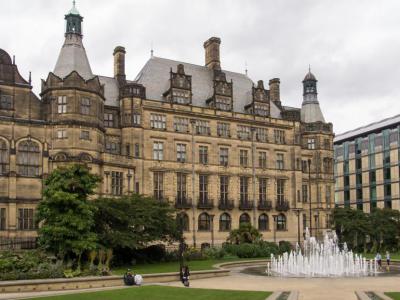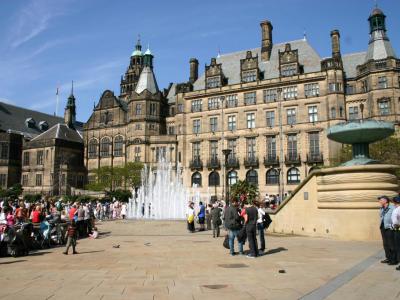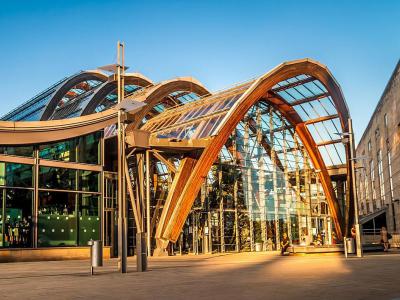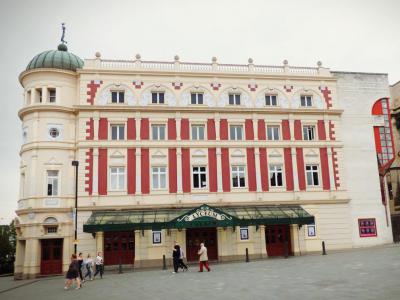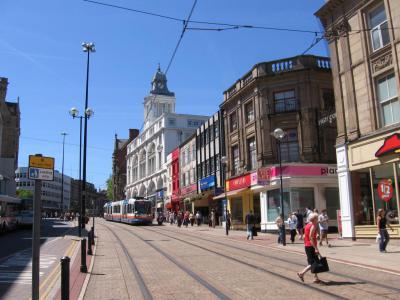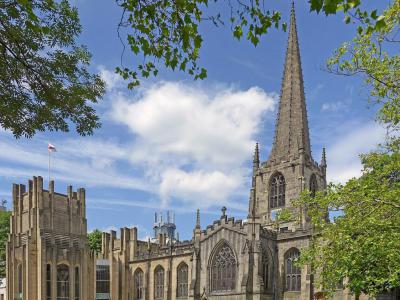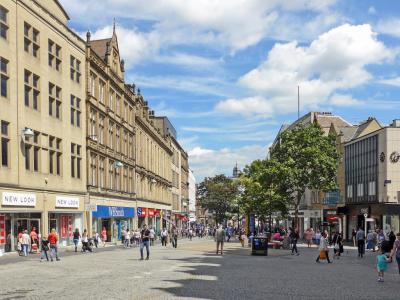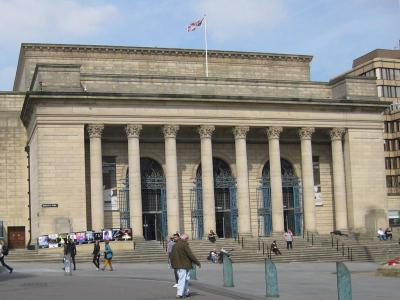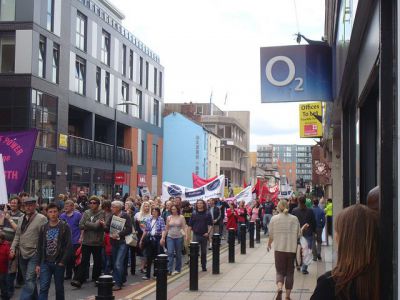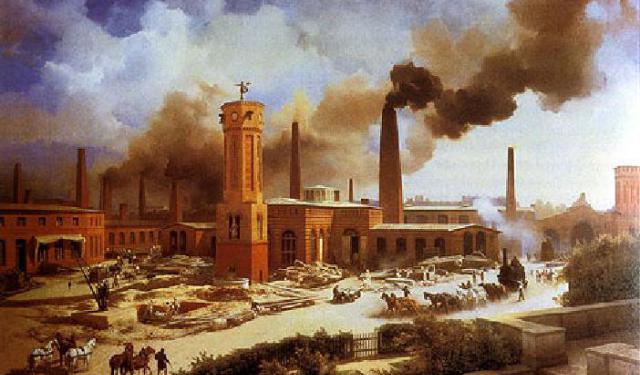
Sheffield Introduction Walking Tour (Self Guided), Sheffield
Sheffield takes its name from the river Sheaf, which runs through the city. Field, of course, is an open space. The city sits at the confluence of the rivers Don and Sheaf. Don is the master stream. Its tributaries are the Loxely, Porter Brook, Rivelin, and Sheaf. There were settlements in this area as far back as 12,000 years ago.
After the Romans, settlements were Anglo-Saxon and Danish. With the arrival of the Normans, Baron William de Lovetot built Sheffield Castle to guard the Saxons. By the 14th century, Sheffield had grown into an important market town. In the 17th century, the town was known for its production of cutlery and steel.
Steel was Sheffield's ticket to greatness. The crucible steel process was developed in Sheffield in the 1740s. The Industrial Revolution brought large-scale steel-making to Sheffield. The arrival of rail travel in the 19th century further boosted the town's population.
Sheffield continues to be a market town. The main shopping areas are the Moor, Fargate, Orchard Square, and the unique Devonshire Quarter. Former factories and foundries are now galleries, theaters, and museums. City Hall harbors a comedy club.
The Millennium Gallery showcases art collections and the world's best metalwork. The enormous Winter Garden greenhouse is an oasis of thousands of plants and trees from around the world. The 12th-century Sheffield Cathedral, with its stunning lantern tower and stained glass, offers a haven of serenity.
The theatre complex in the heart of the city is made up of the Crucible, Lyceum, and Crucible Studio. The Neo-classical Sheffield City Hall in Barker's Pool is a venue for operas, ballet, Pink Floyd, the Beatles, and Lou Reed. Other theaters are the Montgomery, Merlin, and Lantern.
Sheffield is welcoming and friendly, packed with places of art, culture, dining, and lots of green spaces. Festivals, theaters, pubs, nightclubs, and sports give the city a lively spirit and call for adventure. Answer the call.
After the Romans, settlements were Anglo-Saxon and Danish. With the arrival of the Normans, Baron William de Lovetot built Sheffield Castle to guard the Saxons. By the 14th century, Sheffield had grown into an important market town. In the 17th century, the town was known for its production of cutlery and steel.
Steel was Sheffield's ticket to greatness. The crucible steel process was developed in Sheffield in the 1740s. The Industrial Revolution brought large-scale steel-making to Sheffield. The arrival of rail travel in the 19th century further boosted the town's population.
Sheffield continues to be a market town. The main shopping areas are the Moor, Fargate, Orchard Square, and the unique Devonshire Quarter. Former factories and foundries are now galleries, theaters, and museums. City Hall harbors a comedy club.
The Millennium Gallery showcases art collections and the world's best metalwork. The enormous Winter Garden greenhouse is an oasis of thousands of plants and trees from around the world. The 12th-century Sheffield Cathedral, with its stunning lantern tower and stained glass, offers a haven of serenity.
The theatre complex in the heart of the city is made up of the Crucible, Lyceum, and Crucible Studio. The Neo-classical Sheffield City Hall in Barker's Pool is a venue for operas, ballet, Pink Floyd, the Beatles, and Lou Reed. Other theaters are the Montgomery, Merlin, and Lantern.
Sheffield is welcoming and friendly, packed with places of art, culture, dining, and lots of green spaces. Festivals, theaters, pubs, nightclubs, and sports give the city a lively spirit and call for adventure. Answer the call.
How it works: Download the app "GPSmyCity: Walks in 1K+ Cities" from Apple App Store or Google Play Store to your mobile phone or tablet. The app turns your mobile device into a personal tour guide and its built-in GPS navigation functions guide you from one tour stop to next. The app works offline, so no data plan is needed when traveling abroad.
Sheffield Introduction Walking Tour Map
Guide Name: Sheffield Introduction Walking Tour
Guide Location: England » Sheffield (See other walking tours in Sheffield)
Guide Type: Self-guided Walking Tour (Sightseeing)
# of Attractions: 9
Tour Duration: 1 Hour(s)
Travel Distance: 1.7 Km or 1.1 Miles
Author: nicole
Sight(s) Featured in This Guide:
Guide Location: England » Sheffield (See other walking tours in Sheffield)
Guide Type: Self-guided Walking Tour (Sightseeing)
# of Attractions: 9
Tour Duration: 1 Hour(s)
Travel Distance: 1.7 Km or 1.1 Miles
Author: nicole
Sight(s) Featured in This Guide:
- Sheffield Town Hall
- Peace Garden
- Sheffield Winter Garden
- Lyceum Theatre
- High Street
- Sheffield Cathedral
- Fargate
- Sheffield City Hall
- Devonshire Quarter and Division Street
1) Sheffield Town Hall (must see)
On a bright May morning in 1897, Queen Victoria was waiting in her carriage. Her hand was poised over a remote control lock. At a signal, she turned a key in the lock. A window of the new Town Hall of Sheffield lit up, and three men opened the Town Hall gates. The new Sheffield Town Hall in England was officially open for business.
The New Town Hall is a replacement for the Old Town Hall, which still stands, unused on Castle Market to the north. Queen Victoria's New Town Hall, home of the City Council, is on Pinstone Street. This Town Hall is the fourth one for Sheffield, designed by architect Edward W. Mountford in the Renaissance Revival style.
The architecture resonated with the style of neighboring St. Paul's Church of 1720 since being demolished. The exterior is of Stoke stone adorned with friezes of the industries of Sheffield. The 210-foot clock tower is topped with a statue of the god Vulcan. There are no bells. The bell sounds of the tower are electronic.
Inside there is a memorial to the HMS Sheffield, a warship lost in the Falklands War. Beyond the entrance is a grand marble staircase. Friezes on the walls celebrate the killing of the legendary Dragon of Wantley. On the first floor are an oak-paneled gallery, the Lord Mayor's Parlour, Council Room, and an antechamber.
Above the antechamber door is the Bible quote: "Be ye wise as serpents and harmless as doves." Ships, dragons, serpents, and doves; all that in the Sheffield Town Hall.
The New Town Hall is a replacement for the Old Town Hall, which still stands, unused on Castle Market to the north. Queen Victoria's New Town Hall, home of the City Council, is on Pinstone Street. This Town Hall is the fourth one for Sheffield, designed by architect Edward W. Mountford in the Renaissance Revival style.
The architecture resonated with the style of neighboring St. Paul's Church of 1720 since being demolished. The exterior is of Stoke stone adorned with friezes of the industries of Sheffield. The 210-foot clock tower is topped with a statue of the god Vulcan. There are no bells. The bell sounds of the tower are electronic.
Inside there is a memorial to the HMS Sheffield, a warship lost in the Falklands War. Beyond the entrance is a grand marble staircase. Friezes on the walls celebrate the killing of the legendary Dragon of Wantley. On the first floor are an oak-paneled gallery, the Lord Mayor's Parlour, Council Room, and an antechamber.
Above the antechamber door is the Bible quote: "Be ye wise as serpents and harmless as doves." Ships, dragons, serpents, and doves; all that in the Sheffield Town Hall.
2) Peace Garden
Starting in 1930, City Councils in parts of the UK were required to make plans for slum clearance. The idea was to demolish impoverished areas and replace slum housing with other development. St Paul's Church of Sheffield, facing the New Town Hall, was among the properties slated to go.
In 1938 the church was razed, and the Gardens took its place. They were called St Paul's Gardens. But it was 1938, September, and the Munich Agreement promised peace. So, St Paul's Gardens became the Peace Gardens. The Munich Agreement and St Paul's are memories, but the Peace Gardens remain.
In 1997 steps were taken to remove what was left of St Paul's graveyard. The cemetery was replaced with the Sheffield Millennium Square, with fountains and cascades in the center. Prince Charles formally opened the square. The theme is a river of steel, the steel that made Sheffield famous. Flowing channels are the five rivers of Sheffield.
There are memorials of Sheffield people who have served in wars, including the Spanish Civil War and the Korean War. There is also a memorial to Hiroshima, unveiled by survivors of the blast. The Holberry Cascades are named for the Chartist rebels of Sheffield in the 19th and 20th centuries. Here are memories of wars and hope of peace.
In 1938 the church was razed, and the Gardens took its place. They were called St Paul's Gardens. But it was 1938, September, and the Munich Agreement promised peace. So, St Paul's Gardens became the Peace Gardens. The Munich Agreement and St Paul's are memories, but the Peace Gardens remain.
In 1997 steps were taken to remove what was left of St Paul's graveyard. The cemetery was replaced with the Sheffield Millennium Square, with fountains and cascades in the center. Prince Charles formally opened the square. The theme is a river of steel, the steel that made Sheffield famous. Flowing channels are the five rivers of Sheffield.
There are memorials of Sheffield people who have served in wars, including the Spanish Civil War and the Korean War. There is also a memorial to Hiroshima, unveiled by survivors of the blast. The Holberry Cascades are named for the Chartist rebels of Sheffield in the 19th and 20th centuries. Here are memories of wars and hope of peace.
3) Sheffield Winter Garden (must see)
The historic Heart of the City regeneration project of Sheffield, begun in 2004 and completed in 2016, has produced the Peace Gardens and Millennium Galleries. The latest addition to the project is the Winter Garden, opened by Queen Elizabeth II in May 2003. It is the largest greenhouse in the United Kingdom in the last century. It is 77 yards long and 23 yards high.
The Winter Garden was designed by Pringle Richards Sharratt and Bruno Happold architectural firms. The huge glass tunnel has frost protection as low as four degrees Celsius. It is home to more than 2,500 plants from around the world. The structure is made of a glued laminated timber network of weather-resistant larch wood.
The Garden is thoroughly landscaped with exotic trees and shrubs under glass and wood arches of varying heights. Warm in the winter, it is a welcome counter to the nearby open-air Peace Gardens. Three garden environments have been formed within the arches, laid out with meandering ramped paths among the wild-looking planted beds.
The overall horticultural design of the Garden was provided by Waddles, a horticultural architecture and design firm supervising plant sourcing and procurement. Most of the trees are from the Southern Hemisphere. The beds contain well over 150 different species of plants. Some trees are over 33 feet tall and growing.
The Winter Garden has won more than 13 awards in its short history, among them two Green Flag Awards, the Civic Trust Award, and the 2004 Royal Fine Arts Commission Award. There is direct access to the Millennium Gallery, Millennium Square, and Tudor Square. It is open Monday to Saturday from 8 am to 6 pm. Sunday hours are 10 am to 5 pm.
The Winter Garden was designed by Pringle Richards Sharratt and Bruno Happold architectural firms. The huge glass tunnel has frost protection as low as four degrees Celsius. It is home to more than 2,500 plants from around the world. The structure is made of a glued laminated timber network of weather-resistant larch wood.
The Garden is thoroughly landscaped with exotic trees and shrubs under glass and wood arches of varying heights. Warm in the winter, it is a welcome counter to the nearby open-air Peace Gardens. Three garden environments have been formed within the arches, laid out with meandering ramped paths among the wild-looking planted beds.
The overall horticultural design of the Garden was provided by Waddles, a horticultural architecture and design firm supervising plant sourcing and procurement. Most of the trees are from the Southern Hemisphere. The beds contain well over 150 different species of plants. Some trees are over 33 feet tall and growing.
The Winter Garden has won more than 13 awards in its short history, among them two Green Flag Awards, the Civic Trust Award, and the 2004 Royal Fine Arts Commission Award. There is direct access to the Millennium Gallery, Millennium Square, and Tudor Square. It is open Monday to Saturday from 8 am to 6 pm. Sunday hours are 10 am to 5 pm.
4) Lyceum Theatre
Two previous theaters have preceded the Lyceum Theatre at 55 Norfolk Street, Sheffield. In 1879 The Grand Varieties Theatre was built at that address. Originally conceived as a circus, the theatre was managed by comedian Dan Leno. The Grand burned down in 1893 and was replaced by the City Theatre.
In 1900, the Lyceum replaced the City Theatre. The Lyceum was designed by a theatre architect William George Robert Sprague. It had the traditional proscenium arch stage and is the last Edwardian theatre in Sheffield. A statue of Mercury, guardian of Borders and son of Zeus and Maia, balance on top of the theatre's large copper dome.
The Lyceum Theatre went through some hard times and narrowly escaped demolition in 1985. Sheffield entrepreneurs and the City Council rescued it. Today it is a venue for West End productions and local shows. It is a part of the Sheffield Theatres complex, together with the nearby Crucible Theatre and the Tanya Moiseiwitsch Playhouse.
Sprague's design provided for an audience of about 3,000 with stalls on three levels around the auditorium. The Lyceum Theatre reopened in December 1990 with three gala presentations by the D'Oyly Carte Opera Company, including the Broadway version of "The Pirates of Penzance" by Arthur Sullivan (music) and W.S.Gilbert (libretto). The Lyceum Theatre is home to the City's annual pantomime.
In 1900, the Lyceum replaced the City Theatre. The Lyceum was designed by a theatre architect William George Robert Sprague. It had the traditional proscenium arch stage and is the last Edwardian theatre in Sheffield. A statue of Mercury, guardian of Borders and son of Zeus and Maia, balance on top of the theatre's large copper dome.
The Lyceum Theatre went through some hard times and narrowly escaped demolition in 1985. Sheffield entrepreneurs and the City Council rescued it. Today it is a venue for West End productions and local shows. It is a part of the Sheffield Theatres complex, together with the nearby Crucible Theatre and the Tanya Moiseiwitsch Playhouse.
Sprague's design provided for an audience of about 3,000 with stalls on three levels around the auditorium. The Lyceum Theatre reopened in December 1990 with three gala presentations by the D'Oyly Carte Opera Company, including the Broadway version of "The Pirates of Penzance" by Arthur Sullivan (music) and W.S.Gilbert (libretto). The Lyceum Theatre is home to the City's annual pantomime.
5) High Street
William de Lovetot, 12th century Anglo-Norman Baron of Huntingdonshire, was lord of the manor of Hallamshire and was possessed of many other things and places. He built a priory at Worksop in 1103, St Mary's Church at Handsworth, a motte and bailey castle in Sheffield, and a mill and a bridge called Lady's Bridge over the River Don.
High Street by Worksop Priory was called Prior Gate as late as the 18th century. It was the site of the first Town Hall of Sheffield and a narrow lane until 1895 when it was doubled in width. Old buildings were demolished and replaced by graceful French Gothic structures. Shops, financial businesses, and restaurants line the street.
The High Street starts at Fitzalan Square, runs 1,300 feet west, and ends at Sheffield Cathedral, by Fargate and Church Street. Half the street is reserved for tram traffic. The other half is one-way for vehicles. Law firms, bars, bakeries, banks, shops, restaurants, and fast food outlets line both sides of the street.
High Street by Worksop Priory was called Prior Gate as late as the 18th century. It was the site of the first Town Hall of Sheffield and a narrow lane until 1895 when it was doubled in width. Old buildings were demolished and replaced by graceful French Gothic structures. Shops, financial businesses, and restaurants line the street.
The High Street starts at Fitzalan Square, runs 1,300 feet west, and ends at Sheffield Cathedral, by Fargate and Church Street. Half the street is reserved for tram traffic. The other half is one-way for vehicles. Law firms, bars, bakeries, banks, shops, restaurants, and fast food outlets line both sides of the street.
6) Sheffield Cathedral (must see)
Sheffield Cathedral is, precisely, the Cathedral Church of St Peter and St Paul. It serves the Church of England Diocese of Sheffield. It is located on Church Street, near Fargate. Construction of the Cathedral began around 1200 and did not end until 1966. The result is a building that mingles medieval and modern styles.
The church was at first an adjunct of Baron William de Lovetot's Worksop Priory. It was destroyed in the Second Barons' War against Henry III, rebuilt in 1280, and again in 1430.
The 1430 rebuild was on a cruciform plan. The Shrewsbury Chapel was added in the 16th century and the Chapel of St Katherine in 1777. North and south transepts were redone in 1880. The church became Sheffield Cathedral in 1914. The architect Charles Nicholson's plans to reorient the axis of the church were not fulfilled until after World War II.
The east end wall holds stones from the 13th century. The sanctuary and chancel date from the 15th century. The chancel roof is a hammer-beam structure with golden angels. North of the nave is the Chapel of St George, dedicated to the York and Lancaster Regiment. The Te Deum window under the chapel is the work of Christopher Webb, a stained glass designer.
The tram stops in front of the Cathedral. Tour appointments may be made online for a modest charge per adult. There is a pleasant cafe on the site.
The church was at first an adjunct of Baron William de Lovetot's Worksop Priory. It was destroyed in the Second Barons' War against Henry III, rebuilt in 1280, and again in 1430.
The 1430 rebuild was on a cruciform plan. The Shrewsbury Chapel was added in the 16th century and the Chapel of St Katherine in 1777. North and south transepts were redone in 1880. The church became Sheffield Cathedral in 1914. The architect Charles Nicholson's plans to reorient the axis of the church were not fulfilled until after World War II.
The east end wall holds stones from the 13th century. The sanctuary and chancel date from the 15th century. The chancel roof is a hammer-beam structure with golden angels. North of the nave is the Chapel of St George, dedicated to the York and Lancaster Regiment. The Te Deum window under the chapel is the work of Christopher Webb, a stained glass designer.
The tram stops in front of the Cathedral. Tour appointments may be made online for a modest charge per adult. There is a pleasant cafe on the site.
7) Fargate
Fargate is a pedestrianized area between Barkers Pool, with its 90-foot tall war memorial, and the busy High Street. Pedestrianized in 1973, it holds Continental Markets four times a year. The Markets feature cheeses, confections, clothes, plants and flowers, handcrafts, and jewelry. There's a lot to experience at Fargate.
The Wheel of Sheffield is a Ferris wheel, 197 feet high. It is moveable. It not only moves around and around, but it also moves around the country. It began in 2009 as a feature of Fargate. In November 2010, it was transported to other locations. Now it is a seasonal attraction at Fargate in Sheffield.
One revolution takes 13-14 minutes. It has 42 cars with a capacity of eight people per car. The ride is accompanied by a commentary on local attractions. The Peace Gardens nearby is home to the rebuilt Goodwin Fountain, dedicated to industrialist and philanthropist Stuart Goodwin.
Carmel House, an imposing Victorian stone building, Georgian brick terraces, and homes can still be found in Fargate. In 2005, archeologists from the University of Sheffield discovered a medieval sandstone well in the bedrock under Carmel House. Pottery found by the well was dated 1300 AD.
The University of Sheffield Futurcade exhibition provides an augmented reality experience "teleporting" around the virtual city model to explore the plans for the immediate future of Fargate and High Street.
The Wheel of Sheffield is a Ferris wheel, 197 feet high. It is moveable. It not only moves around and around, but it also moves around the country. It began in 2009 as a feature of Fargate. In November 2010, it was transported to other locations. Now it is a seasonal attraction at Fargate in Sheffield.
One revolution takes 13-14 minutes. It has 42 cars with a capacity of eight people per car. The ride is accompanied by a commentary on local attractions. The Peace Gardens nearby is home to the rebuilt Goodwin Fountain, dedicated to industrialist and philanthropist Stuart Goodwin.
Carmel House, an imposing Victorian stone building, Georgian brick terraces, and homes can still be found in Fargate. In 2005, archeologists from the University of Sheffield discovered a medieval sandstone well in the bedrock under Carmel House. Pottery found by the well was dated 1300 AD.
The University of Sheffield Futurcade exhibition provides an augmented reality experience "teleporting" around the virtual city model to explore the plans for the immediate future of Fargate and High Street.
8) Sheffield City Hall
The City Hall building was designed by Classicist architect E. Vincent Harris in 1920. Construction was not undertaken for eight years because of an unpredictable economy. The City Hall was formally opened in September 1932. It was conceived as a memorial of World War I. Ultimately, the name became Sheffield City Hall.
The City Hall is located in Barker's Pool Square in the city center. It was built by the Sheffield City Council and managed by the Sheffield City Trust. It is operated as a concert venue under a 99-year lease by Sheffield International Venues.
Performers at the City Hall included Nat King Cole in April 1954 and Louis Armstrong in March 1959. The Beatles appeared twice, in 1963 and again in 1964. Other artists include the band Nice in 1969, Elton John in 1971, and the rock band Bon Jovi in 1986. Mezzo-soprano Katherine Jenkins sang there in 2012.
The City Hall is a Neoclassical-style building with an oversized portico supported by eight enormous Corinthian columns. The largest hall inside is the Oval Hall. It can hold up to 2,217 enthusiastic fans. The Memorial Hall holds 425 people, and the Ballroom can accommodate another 400. Two four-foot-high stone lions stand guard in the foyer.
The City Hall is located in Barker's Pool Square in the city center. It was built by the Sheffield City Council and managed by the Sheffield City Trust. It is operated as a concert venue under a 99-year lease by Sheffield International Venues.
Performers at the City Hall included Nat King Cole in April 1954 and Louis Armstrong in March 1959. The Beatles appeared twice, in 1963 and again in 1964. Other artists include the band Nice in 1969, Elton John in 1971, and the rock band Bon Jovi in 1986. Mezzo-soprano Katherine Jenkins sang there in 2012.
The City Hall is a Neoclassical-style building with an oversized portico supported by eight enormous Corinthian columns. The largest hall inside is the Oval Hall. It can hold up to 2,217 enthusiastic fans. The Memorial Hall holds 425 people, and the Ballroom can accommodate another 400. Two four-foot-high stone lions stand guard in the foyer.
9) Devonshire Quarter and Division Street
Division Street and Devonshire Street together make up the Devonshire Quarter of Sheffield. Unlike most other shopping areas, they are known for their small, independent shops, alternative businesses, cafes, pubs, and bars.
A notable shopping center in the district is the Forum, a two-floor shopping center of arcade boutiques, a pool hall, and an inviting cafe. Near the Forum is Devonshire Green, a comparatively vast open area of central Sheffield. The Devonshire Quarter is bounded by Sheffield's Ring Road, Carver Street, West Street, Moore Street, and Charter Row.
The Quarter aims to be an urban village of residences and retail shops within the Devonshire Quarter. Division Street has independent, non-chain shops and a few larger ones like Costa Coffee and Sainsbury's Local supermarket. There are picturesque local pubs like the Frog & Parrot and Lloyds No.1 Bar.
Some historic buildings are in the Quarter, including Taylor's Eye Witness Works and Beehive Works, a 19th-century factory houses still manufacturing Sheffield cutlery and steel products.
Nightlife includes unique venues for clubbing. The Crystal Bar is located in the old Scissor Works Factory, hosting club nights. The Green Room bar features live music. The Popworld offers a proper cheesy night of rock and pop. Walkabout bar is home to live sports. The Viper Rooms nightclub is glamorous.
A notable shopping center in the district is the Forum, a two-floor shopping center of arcade boutiques, a pool hall, and an inviting cafe. Near the Forum is Devonshire Green, a comparatively vast open area of central Sheffield. The Devonshire Quarter is bounded by Sheffield's Ring Road, Carver Street, West Street, Moore Street, and Charter Row.
The Quarter aims to be an urban village of residences and retail shops within the Devonshire Quarter. Division Street has independent, non-chain shops and a few larger ones like Costa Coffee and Sainsbury's Local supermarket. There are picturesque local pubs like the Frog & Parrot and Lloyds No.1 Bar.
Some historic buildings are in the Quarter, including Taylor's Eye Witness Works and Beehive Works, a 19th-century factory houses still manufacturing Sheffield cutlery and steel products.
Nightlife includes unique venues for clubbing. The Crystal Bar is located in the old Scissor Works Factory, hosting club nights. The Green Room bar features live music. The Popworld offers a proper cheesy night of rock and pop. Walkabout bar is home to live sports. The Viper Rooms nightclub is glamorous.
Walking Tours in Sheffield, England
Create Your Own Walk in Sheffield
Creating your own self-guided walk in Sheffield is easy and fun. Choose the city attractions that you want to see and a walk route map will be created just for you. You can even set your hotel as the start point of the walk.
Industrial Revolution Heritage Walking Tour
Steeped in history, the city of Sheffield is famed for its contribution to the Industrial Revolution, largely due to the development of stainless steel. Indeed, the “Steel City” of the United Kingdom, it was internationally renowned as a major hub of steel manufacturing during the 19th century. So much so, in fact, that George Orwell once famously referred to it as “the ugliest town in the... view more
Tour Duration: 2 Hour(s)
Travel Distance: 3.0 Km or 1.9 Miles
Tour Duration: 2 Hour(s)
Travel Distance: 3.0 Km or 1.9 Miles
Sheffield's Historical Buildings
Part of Sheffield’s great heritage is manifested in buildings. The presence of historical sites, some rather imposing like the Sheffield Town Hall and City Hall, presiding over the area, and the others like the Church of St Marie, somewhat hidden from view in a built-up neighbourhood, provides a colourful illustration of the city's glorious past.
Constructed over a time-span ranging from... view more
Tour Duration: 2 Hour(s)
Travel Distance: 2.9 Km or 1.8 Miles
Constructed over a time-span ranging from... view more
Tour Duration: 2 Hour(s)
Travel Distance: 2.9 Km or 1.8 Miles
The Most Popular Cities
/ view all
